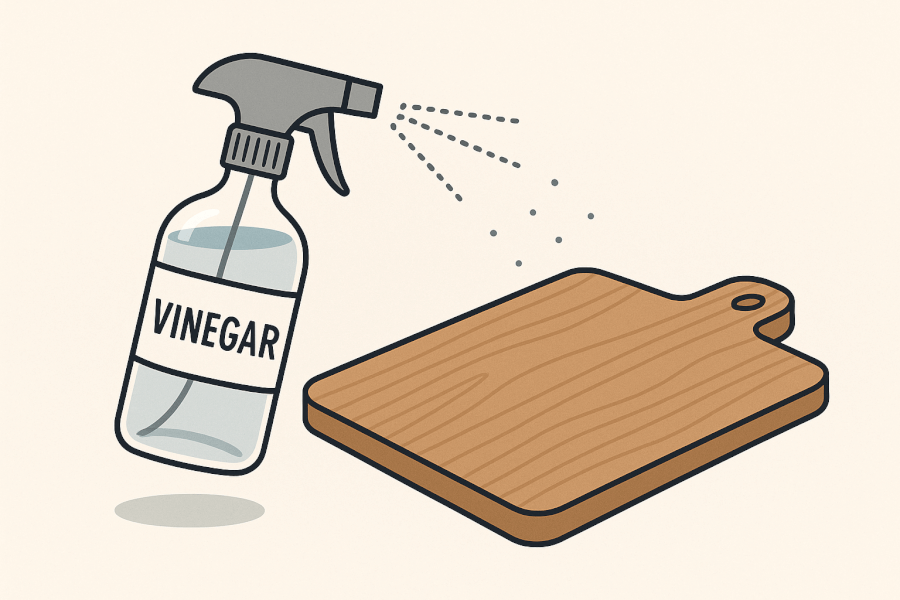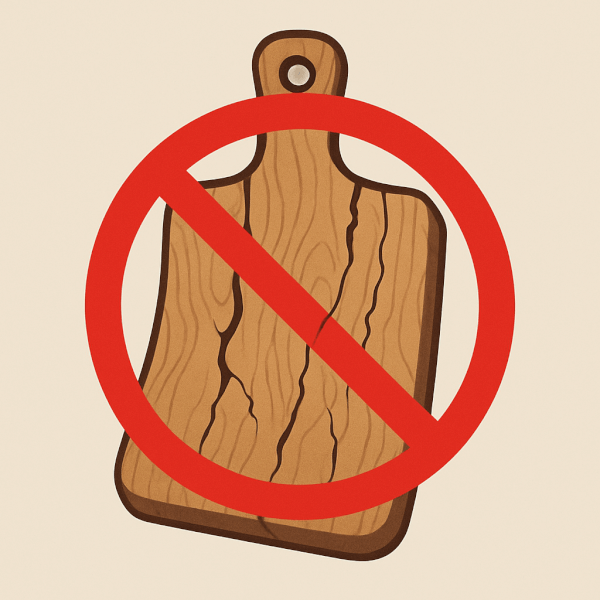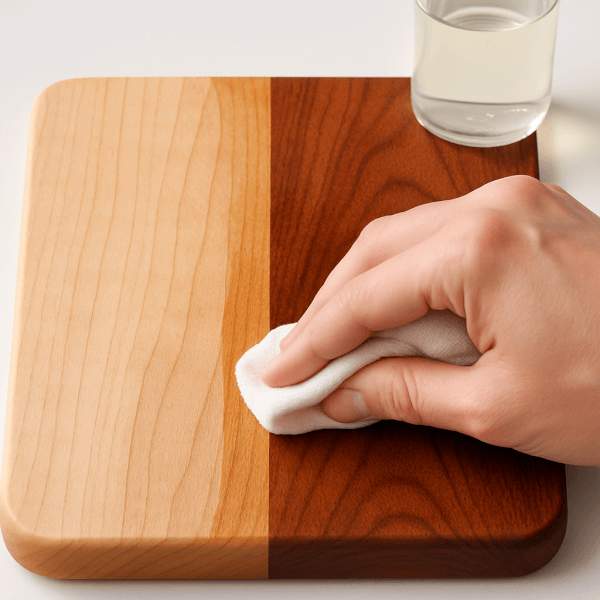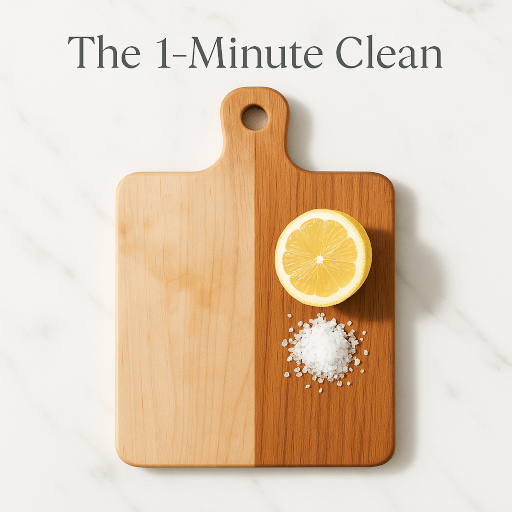Your beautiful wooden cutting board can last a lifetime, but are you cleaning it correctly? Conflicting advice online can leave you wondering if you’re doing enough to prevent germs, or too much and risking a cracked board. It’s a common frustration that can lead to ruined boards or anxiety about food safety.
Forget the confusion. We’ll show you the 1-minute trick for daily cleaning that deodorizes and lifts stains, plus the essential rules for sanitizing and long-term care. You can do it all with simple, natural ingredients you probably already have in your kitchen. This guide is your final answer to beating germs from raw meat, erasing stubborn stains and odors, and preventing your board from warping or cracking.
The 1-minute super tip: the lemon and salt scrub

This is your go-to method for daily cleaning. It’s a powerful combination that effectively cleans, deodorizes, and lifts light stains in about 60 seconds, making it easy to keep your board in top condition.
It works because of simple science. Coarse salt acts as a brilliant natural abrasive, scrubbing away tiny food particles stuck in the wood grain. At the same time, the citric acid in lemon juice works to neutralize odors from things like garlic and onions, while also acting as a mild, natural cleaner.
Here’s how to do it:
- Sprinkle the board generously with coarse salt. Kosher or sea salt works perfectly.
- Slice a lemon in half. Use the cut side of one half to scrub the salt into the board, moving in small circles. Squeeze the lemon as you go to release its juice. You’ll see a gray, dirty paste start to form.
- Let the salt and lemon mixture sit on the board for a moment to work its magic.
- Use a bench scraper or a firm spatula to scrape the dirty paste off the board and into the trash.
- Give the board a quick rinse with a little dish soap and hot water, and—this is critical—immediately dry it thoroughly with a clean towel.
Beyond the scrub: 3 cardinal rules for a lifelong board
While the lemon scrub is perfect for daily use, a few other rules are essential for food safety and making sure your board lasts for decades.
Rule #1: Sanitize properly after raw meat

For true food safety, a deeper clean is non-negotiable after your board comes into contact with raw meat, poultry, or fish. A simple, natural solution is more effective than you might think.
The answer is undiluted white vinegar in a spray bottle. The acetic acid in vinegar is a fantastic natural disinfectant that is effective against common kitchen germs like E. coli. According to USDA guidelines for cutting board safety, boards must be properly cleaned and sanitized to avoid cross-contamination. While chemical sanitizers are an option, educational resources from university extensions like Michigan State University also highlight the effectiveness of vinegar for safe home use.
To use it, simply wash your board as usual, then lightly spray the surface with the white vinegar. Let it sit for a few minutes, then wipe it dry with a paper towel. There’s no need to rinse it off.
Rule #2: Avoid the cardinal sin of board care

The absolute worst thing you can do is put your wooden cutting board in the dishwasher or let it soak in the sink. The combination of intense heat and prolonged submersion in water forces the wood fibers to swell rapidly and unevenly. This will inevitably cause the wood to warp, bend, and crack, often beyond repair. Always wash by hand and never submerge your board.
Rule #3: Oil your board regularly

Think of it like moisturizing your skin. Oiling your board about once a month is the single most important step for its longevity. It keeps the wood hydrated, which prevents it from drying out and cracking. It also creates a protective barrier that repels moisture and stains.
Always use a food-grade mineral oil. Do not use cooking oils like olive, vegetable, or coconut oil. These organic oils can go rancid over time, leaving your board with a sticky residue and a foul smell. As experts on maintaining wooden cutting boards confirm, regular oiling is the most critical step for preservation.
Conclusion
Caring for your wooden cutting board doesn’t have to be complicated. By using the quick lemon and salt scrub for daily cleaning, sanitizing with vinegar when necessary, and keeping your board properly oiled, you have everything you need. If you just remember to keep it out of the dishwasher, you’ll ensure your board remains a safe, beautiful, and lifelong tool in your kitchen.
Frequently asked questions
What is the best way to clean and sanitize a wood cutting board?
The best way is a two-step process. First, wash it with a small amount of soap and hot water after daily use. Second, to sanitize it—especially after contact with raw meat—spray it with undiluted white vinegar, let it sit for a few minutes, and wipe it dry.
Can you use soap on a wooden cutting board?
Yes, a small amount of dish soap with hot water is perfectly safe and effective for everyday washing. The key is to rinse it off promptly and, most importantly, dry the board with a towel immediately instead of letting it air dry.
How do you make a wooden cutting board look new again?
To make a board look new, perform a deep clean using the lemon and salt scrub method to lift deep-set stains and neutralize odors. After it’s completely dry, apply a generous coat of food-grade mineral oil. Let it soak in for several hours or overnight, wipe off the excess, and the wood’s color and luster will be beautifully restored.
